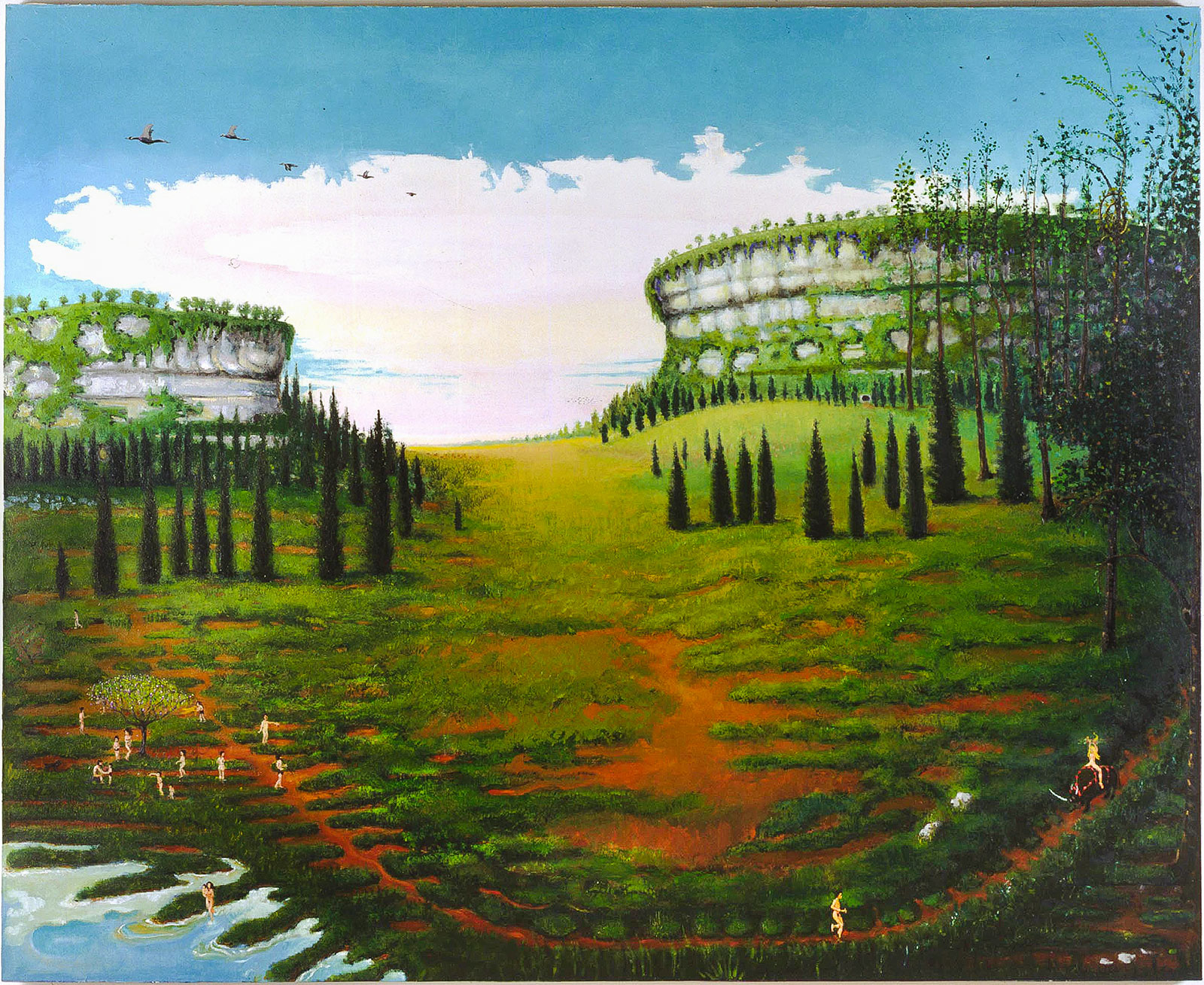
Cycle of quarter-days observances, circa 23800 b.c., May Day, Les Eyzies
Verne Dawson, 1999, oil on canvas, 82 x 100 inches, © 1999, courtesy of Gavin Brown’s enterprise and the artist
Verne Dawson
In his fanciful oil paintings, Verne Dawson creates timeless scenes that convey humanity’s relationship with the natural world. He portrays people in verdant landscapes, happily engaged in pastoral activities and pagan rituals. He depicts a tribal existence of alluring simplicity, in which humans follow the rhythms of nature. Dawson often refers to a distant past in which ancient humans worshipped nature and lived according to the seasons and other natural cycles. He awakens feelings of nostalgia for a time when nature permeated our daily routines, our calendar and our folklore, and hints at a possible future in which modern technology coexists with a deep connection to nature. In works such as “Massacre of the Little People by the Big People,” Dawson reminds us of the troubled environmental legacy that humanity must overcome to attain such a future. Dawson encourages us to move beyond this checkered past by reconnecting with the natural world and embracing our ancestors’ devotion to nature.
Explore the Gallery





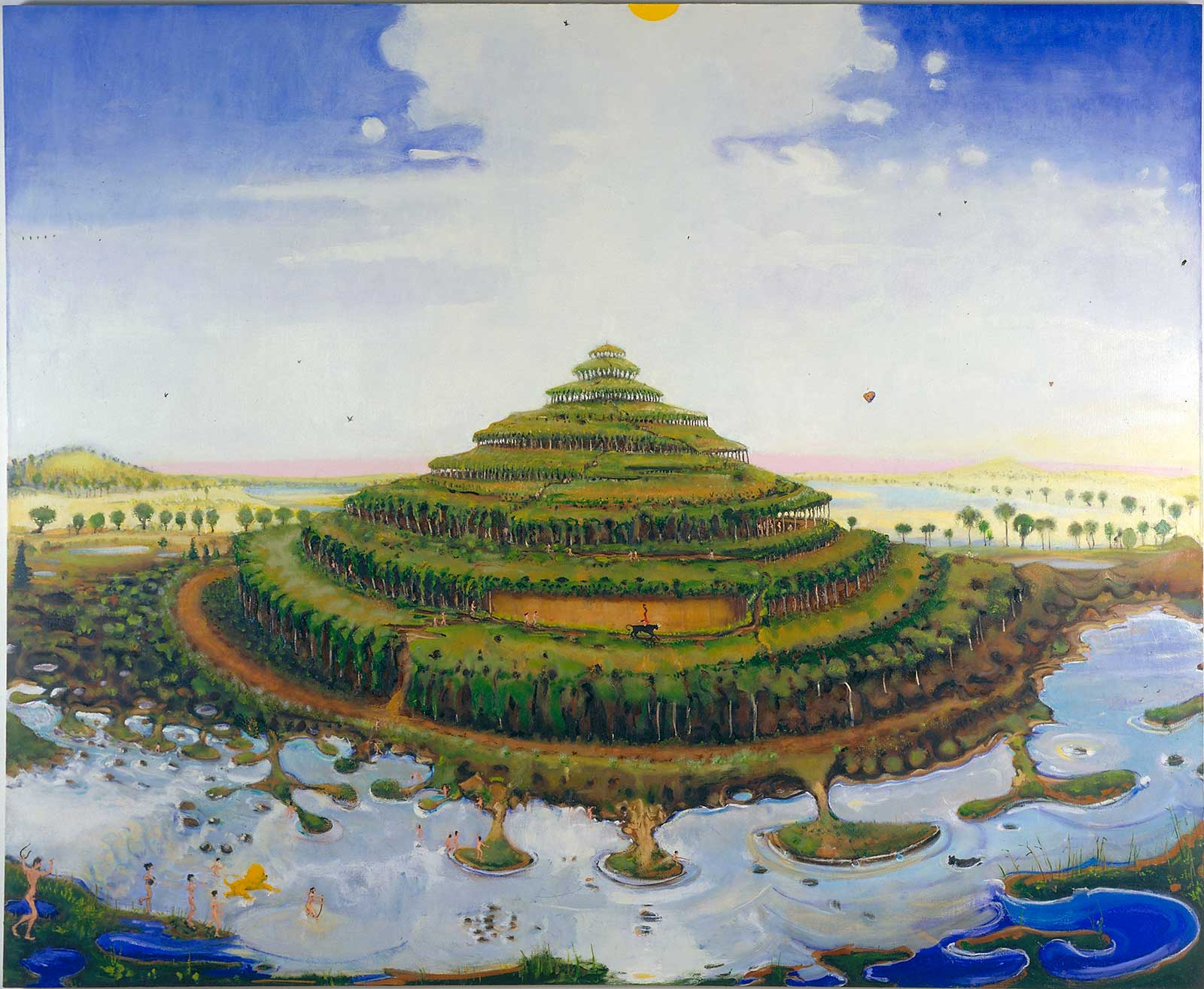
Cycle of quarter-days observances, circa 23,800 b.c. Solstice Procession in the Magdelenian Era
Verne Dawson, 2001, oil on canvas, 82 x 100 inches, © 2001, courtesy of Gavin Brown’s enterprise and the artist
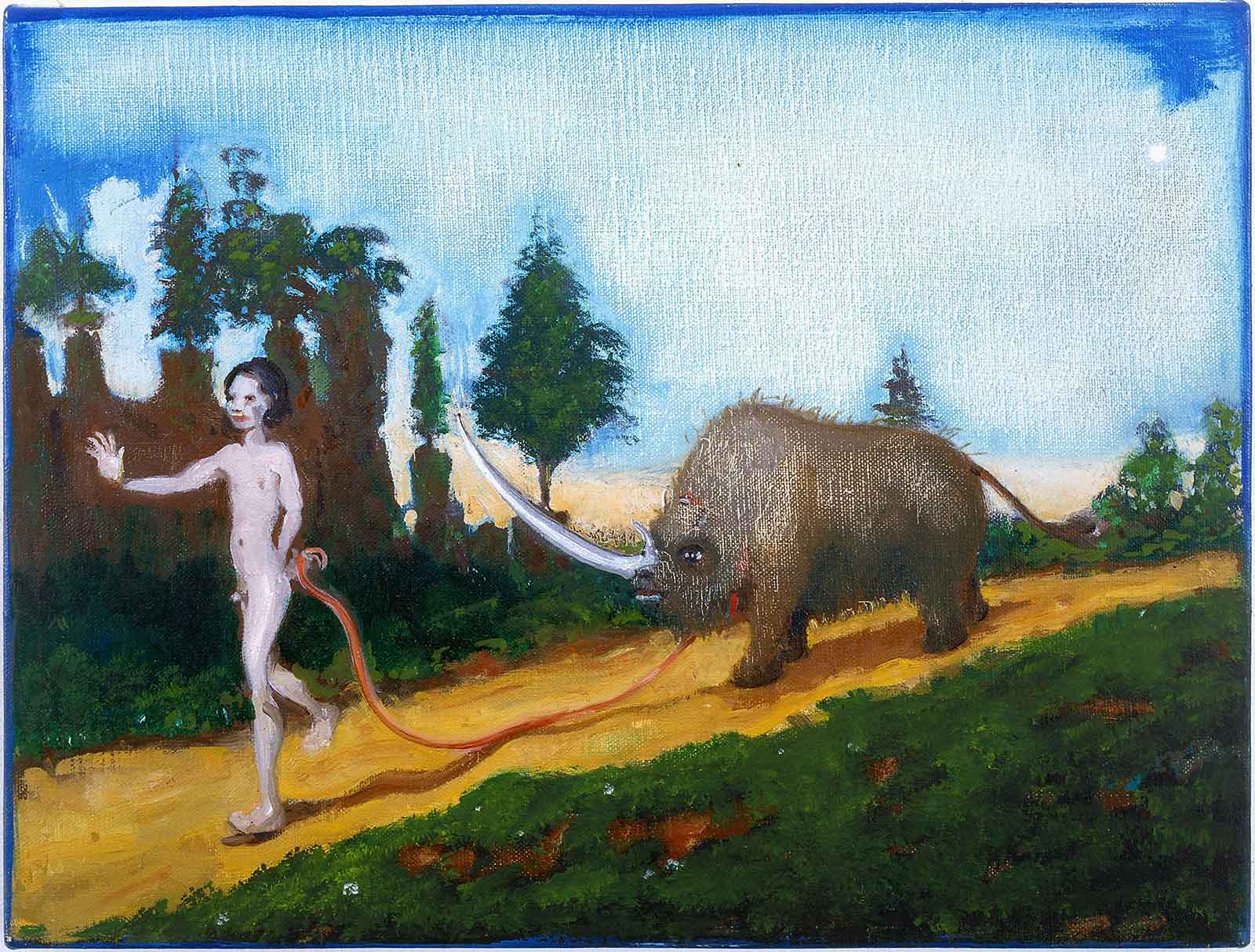
Boy and Wooly Rhinoceros
Verne Dawson, 1999, oil on canvas, 12 x 16 inches, © 1999, courtesy of Gavin Brown’s enterprise and the artist
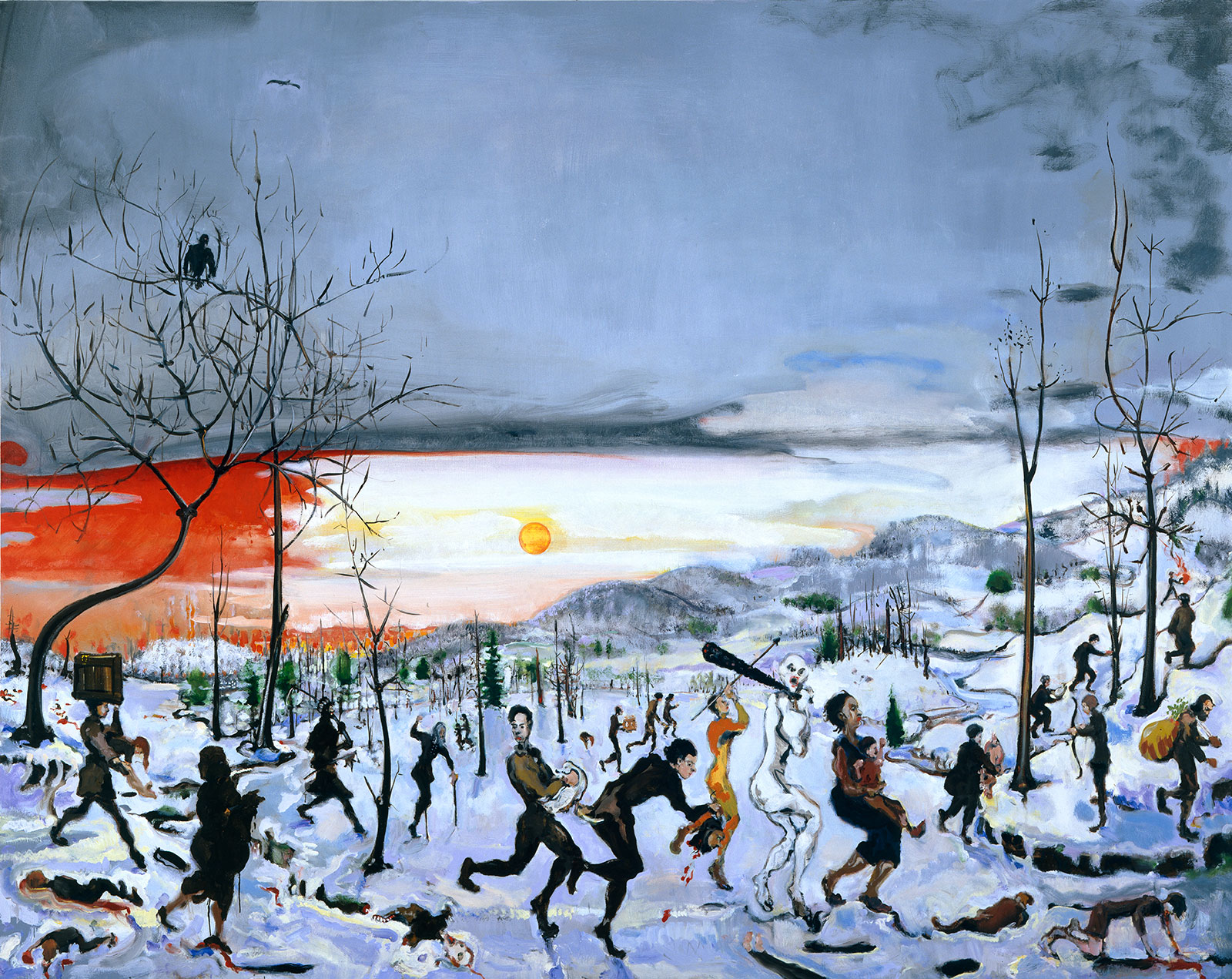
Massacre of the Little People by the Big People
Verne Dawson, 2002-2003, oil on canvas, 82 x 100 inches, © 2003, courtesy of Victoria Miro, London and the artist
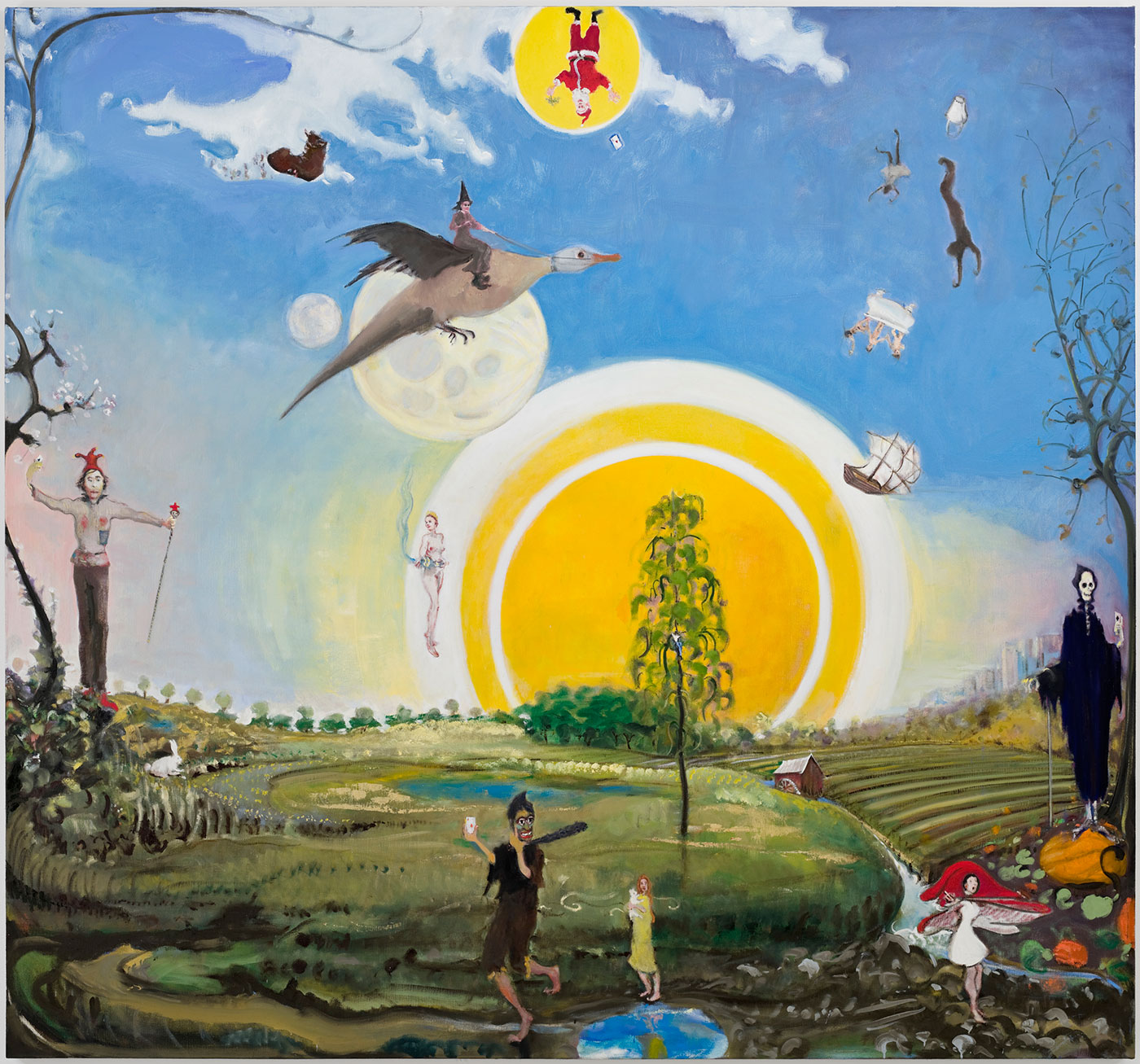
Pagans
Verne Dawson, 2009-2010, oil on canvas, 100 x 109 inches, © 2010, courtesy of Gavin Brown’s enterprise and the artist





